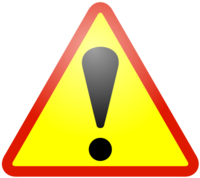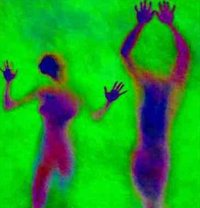Personal Statement One
Notice
This statement was originally written by me personally in Japanese and was checked by my lawyer.
Statement
January 21, 2008
Address: xx xxxxxx xxxxxx, xxxxxxx, xxx xxxxxxxx, xxxxxxxx, New Zealand
Signiture: (Seal)
Top of Page
1. Background Information (My Affiliation with Japan)
I am a 42 year old male Caucasian New Zealander born on 9 September 1966 (Evidence article: Koh C7). I hereby make the below statement truthfully, fully and to the best of my knowledge.
In 1992 I made my first trip to Japan when I was awarded a scholarship for outstanding students of the Japanese language and represented New Zealand on a two week study scholarship tour. Two years later in 1994 I worked for an English school in Nagoya as an English teacher for one year, then one year after completing that job I worked as a Coordinator for International Relations for the Kitakata Municipal Office in Miyazaki from August 1996 to July 1998 (my third trip to Japan – refer evidence article: Koh C13).
After that I returned to New Zealand and did some occasional work for the Resident Japanese Consulate, however, in May 1999 I decided I was going to pursue a working career in Japan and made my fourth trip to Japan to work as an English teacher at an English conversation school in Numazu City, Shizuoka for a period of one year. Then at the end of March 2000 I changed jobs to work for the Saitama International Association where I intended to continue working for the foreseen future (Evidence article: Koh C3).
I have endeavored to continue making contributions to Japan’s International relations in this way, particularly those between New Zealand and Japan, for a period extending over more than ten years (Evidence article: Koh C13).
However, due to the effects of this incident, I ended up in a state where I had to return to New Zealand in March 2001. Despite having made a recovery, I have continued to suffer from panic attacks (being struck over by such severe feelings of anxiousness that you feel as if you’re going mad, not knowing what to do next, and now that I’m working as a teacher, these sometimes occur in the midst of a lesson resulting in the need to escape the classroom), chronic depression, anxiety etc (Evidence article: Koh A18, 1~3) (TN: Psychologist, Dr. Alan Guy’s letter).
Top of Page
2. May 1999 - I Was in Good Health Prior
When I came to Japan on May 18 to work as an English teacher for an English conversation school in Numazu City, Shizuoka, I was in good health – both physically and mentally. At that point in time I got along very well with others, was quite lively and in good health. Clearly I had never made any complaints of psychological instability such as panic attacks in the past, including when I was first seen by Dr. X (Evidence articles: Koh A1, Otsu A1 – entry dated June 30, 2000) (TN: Dr. X’s patient file).
Top of Page
3. May 11, 2000 - Vertigo & ORC Hospital Consultations
3.1. End March 2000 – Changed Jobs to Saitama International Association
At the end of March 2000 I changed Jobs to the Saitama International Association. At the end of April I can recall experiencing some slight feelings of fatigue, however, after consulting a local clinic they said that there was no particular problem and so I continued to work as normal.
3.2. May 11, 2000 – Rotational Vertigo Attack & ORC Hospital Consultations
At 2am on May 11, I was awaken by a sudden attack of vertigo. It felt as if my environment was spinning around with the room appearing to turn in a clockwise rotation. This was the first time I experienced a rotational vertigo attack and furthermore I have not experienced one since that time either. Other symptoms that accompanied this vertigo attack included hot flushes, vomiting and difficulty in walking (these symptoms persisted for about 1 week thereafter).
Accordingly early that same morning I called my boss from work who arranged for a taxi to take me to the ORC Hospital (currently STRC Hospital) where I underwent a range of examinations at the ENT, Internal Medicine, and Neurology Departments. On the morning of May 15, I experienced another episode of dizziness only this time it was more a floating or rocking sensation.
For several days following the initial rotational vertigo attack I continued to experience symptoms such as ongoing dizziness (not rotational), staggering, nausea, sense of environment rocking from side to side, sensations like being drunk and feelings of head and body swaying. I tended to veer off to the left when walking and it felt like someone was pushing me to the left, especially when sitting down. Also, it seemed as though I was viewing my environment through a camcorder when walking. (TN: referring to the swaying sensation)
3.3. May 16, 2000 – ORC Hospital Prescriptions
On May 16, the test results from the Internal Medicine Department at the ORC Hospital came through showing up negative so I just continued to take the medicine they had prescribed and did my best to get plenty of nutrition and sleep.
3.4. June 2000 – Completion of ORC Hospital Consultations & Referral to Dr. X
During the month of June my sense of balance had been slowly improving, however, there was still no sign of a complete recovery and I continued to have dizzy sensations such as my environment floating or rocking.
During the same month of June I saw Dr. X being introduced on a television documentary as an International Authority on Dizziness, and subsequently on June 26, I managed to get a referral from Dr. K, Neurologist at the ORC Hospital, to see the now defendant, Dr. X.
Top of Page
4. Period during Defendant X's Consultations at S Clinic till Return Home to New Zealand
4.1. June 30, 2000 – Treatment 1 –
A) Submission of Handwritten List of Symptoms & Examination
At the first consultation on June 30, 2000 I handed Dr. X a list of symptoms that I had handwritten as a precautionary measure. (I do not have any real communication problems in Japanese but considering that I am a foreigner and also the importance of providing accurate information about my symptoms, I made a point of keeping Dr. X informed by handing him these handwritten lists of symptoms at almost each and every consultation. However, Dr. X did not always pay sufficient attention to them and on many occasions he did not even bother to take photocopies).
To explain further, the handwritten lists of symptoms that I gave to Dr. X on this particular day did not only include evidence article: Otsu A1, pages 11~12, but I can also recall giving him the list on page 13 as well. I feel that Dr. X may have mistakenly later added the date “July 5, 2000” to the document. Whatever the case, the inclusion of the date “July 5, 2000” was not made by me.
B) Dr. X’s Diagnosis
Sylvian Aqueduct Syndrome (SLAS) was the diagnosis that Dr. X gave me (Refer differential diagnosis document – evidence article: Koh A3, page 3) (TN: Dr. X’s written diagnosis).
Dr. X said that in order to cure this Sylvian Aqueduct Syndrome, it would be necessary to change the constitution of my organic make-up which he would do with drugs. He described his proposed prescriptions as a “drug cocktail”, something he referred to as “a radical approach” as opposed to a conservative one.
C) Dr. X’s Neglect of Informed Consent
Dr. X explained to me that I could expect to make a recovery within about four months of commencing the drug treatment. However, there was no explanation regarding the nature of the drugs. So, I decided to take the liberty of asking if they had any side effects, as a precautionary measure.
Dr X answered by saying “All drugs have some side-effects but these are non-addictive drugs in small doses (Dr. X’s prescribed doses) with little side effects so you needn’t worry about taking them over long periods of time”. This particular visit concluded with just a consultation.
4.2. July 5, 2000 – Treatment 2 – (commencement of drug treatment)
Dr. X prescribed me: Contol (TN: Chlordiazepoxide) 15mg, Granddaxin (TN: Tofisopam) 1.5g, Rivotril (TN: Clonazepam) 0.9mg, Ketas Capsules ×3 (TN: Ibudilist 30mg), Aplace (TN: Troxipide) 1.5g and Tofranil (TN: Imipramine) 10mg respectively for an initial period of 14 days (Evidence article: Koh A2 – patient file bottom left of page 2 (TN: Dr. X’s patient file deciphered), evidence article Koh A9 and evidence article Otsu A1). At the time of prescribing he did not explain to me the risks regarding the addictive nature of benzodiazepines – even on prescribed therapeutic doses.
As above, the prescriptions included benzodiazepines, however, until the time I consulted Dr. Michael J. Whitwell, I remained unaware of the addictive nature of these drugs (Evidence article: Koh A7, page 2) (TN: Dr. Whitwell’s letter). So all I could do was to have faith in Dr. X’s diagnosis and treatment, and subsequently, I continued to take his prescriptions from the commencement date of July 5, 2000 till January 23, 2001 totaling 203days (Evidence article: Koh A2, Koh A9) (TN: Dr. X’s patient file deciphered, prescription forms).
4.3. July 19, 2000 – Treatment 3 – (following 2 weeks of drug treatment / initial settling of symptoms)
For the first few weeks following the commencement of the drug treatment my symptom of dizziness appeared to have settled a little and became less severe. I was happy with the initial progress and felt that if I continue to have faith in Dr. X and continue taking his prescriptions that I would be able to make a recovery.
At the time of consultation on July 19, 2000, Dr. X asked me “Have your symptoms settled at all?” and I replied; “Yes they have a little, thank you”. With that, Dr. X then proceeded to make a further prescription of benzodiazepines just as he did the previous time (Evidence article: Koh A2) (TN: Dr. X’s patient file deciphered). He gave me absolutely no explanation regarding the risks of addiction on this occasion either.
4.4. August 4, 2000 – Treatment 4 – (period of no notable changes either in recovery or deterioration)
At consultation on August 4, 2000, Dr. X asked “Have your symptoms improved?” My symptoms at the end of July were better than they were initially; however, there was not really any change after that, so I responded by saying “there hasn’t really been any change since my last consultation on July 19, 2000”. Dr. X then handed me a note saying “I will stop your dizziness. The drugs won’t take effect immediately but they will work over time”.
4.5. August 21, 2000 – Treatment 5 – (symptom reemergence & development of new symptoms)
A) Symptom Reemergence & Development of New Symptoms
At the time of consultation on August 21, 2000, the symptoms that had settled initially had begun to worsen and furthermore, it seemed that I had developed some new symptoms as well.
This is when I handed Dr. X an updated list of symptoms (Evidence article: Koh A12-1) which included: “continuing staggering, lethargy and fatigue, shortness of breath, palpitations, eyes feel like they’re swimming, legs feel weak, feel out of kilter (TN: staggering), summer lethargy, stress and fatigue, stiff shoulders, worsening hemorrhoids, mouth ulcers, loss in appetite” and then I expressed some concern by saying “My symptoms have worsened and I seem to have developed some new ones as well”.
B) Dr. X’s Prescriptions
In response to this, Dr. X just made comments such as “you have to eat more”, “make sure you don’t drink cold water directly after a hot bath”, “you probably feel worse because of the recent bad weather” and subsequently continued with the existing treatment by making further prescriptions of benzodiazepines just as before.
Despite the reemergence and development of new symptoms, there was nothing said about the risks of developing addiction on therapeutic doses of benzodiazepines.
4.6. September 18, 2000 – Treatment 6 – (deterioration in condition)
Even after the treatment had continued as far as September 18, there was no sign of my condition recovering, rather to the contrary, it seemed that it was deteriorating. So I decided to say to Dr. X “My condition isn’t improving. Rather the new symptoms I complained of at the previous consultation (August 21, 2000) are worsening”.
Once again, on this occasion also, Dr. X prescribed benzodiazepines. He said nothing about the risks of developing addiction on therapeutic doses of benzodiazepines.
4.7. October 20, 2000 – Treatment 7 – (further deterioration in condition, panic attacks, depression, anxiety)
A) Further Deterioration in Condition, Panic Attacks, Depression, Anxiety
Despite nearing the point of 4 months at which Dr. X said that I could expect to make a recovery, my condition continued to deteriorate rapidly. That is to say I was now suffering from persistent palpitations, pressure in the chest, flushes, stomach pains, tingling sensation in hands and temple areas, visual disturbances, loss in appetite, emotional instability (depression, anxiety, panic attacks) etc.
With the exception of visual disturbances, loss in appetite, and emotional instability, none of these symptoms existed prior to consulting Dr. X and undergoing the drug treatment, not even at the time of the debilitating vertigo attack.
Also, the makeup of the visual disturbances, loss in appetite, and emotional instability was different in nature and degree compared to the time before I consulted Dr. X. Regarding the visual disturbances, the sensitivity to light intensified, regarding the loss in appetite, this was now associated with other symptoms such as chronic dry mouth and taste abnormalities (TN: metallic taste in mouth), and as for the emotional instability, this came to include chronic type depression and anxiety together with the sudden onset of instability (panic attacks) that were so intense it made me wonder if I was going mad at times.
I never knew when these sudden episodes of instability (panic attacks) would hit me. This is the first time I had ever experienced anything like this and it still remains with me. However, it was only these panic attacks that I never reported to Dr. X. This is because I felt afraid of being diagnosed as mentally unwell and sent off to an institution in a country different from own never to come out again. I never had this severe degree of instability before consulting Dr. X and commencing his drug treatment.
B) Continuation of Existing Treatment
I expressed to Dr. X more strongly than ever before that “my condition is rapidly worsening”. However, Dr. X made no review of the treatment and continued to prescribe benzodiazepines. On this occasion also, he said nothing about the risks of developing addiction on therapeutic doses of benzodiazepines.
4.8. November 24, 2000 – Treatment 8 – (diagnosed as recovered 100%)
At consultation on November 24, 2000 Dr. X ran a few tests (mainly eye examinations) and said “you’re 100% now”, “The results show that you have now recovered” (Evidence article: Koh A2) (TN: Dr. X’s patient file deciphered).
However, at this point in time, the symptoms I presented with to Dr. X at initial consultation had completely reemerged, worsened even further, and the new symptoms I had developed later in the treatment had been worsening also (Evidence article: Koh A6 – patient file, page 8: “Currently receiving treatment at Balance Neurologist but not going so well”) (TN: O Medical Center patient file).
4.9. End November 2000 (failed attempt at reduction)
Towards the end of November 2000, I began to lose faith in Dr. X so I decided to make an attempt at stopping the prescribed drugs. However, I found that I was unable to go without a single dose and so I ended up having to continue taking the drugs as prescribed (First reduction attempt).
My condition deteriorated more and more with the confusion and emotional instability becoming more prominent, and due to the panic attacks I found that I was unable to carry out my job as expected leading to some apparent feelings of resentment among fellow employees, I became down and thoughts of suicide had entered my mind for the first time.
4.10. December 21, 2000 (consulted O Medical Center)
On December 13, 2000 my growing concern over Dr. X’s treatment had become more than I could bear and so I decided return to the ORC Hospital where I was first seen and asked Dr. K there to provide me with a re-referral to another hospital. Dr. K then diagnosed: “suspected autonomic nervous disorder (TN: term commonly used in Japan for psychosomatic symptoms caused by stress / anxiety), vestibulopathy” and then wrote out a referral for me to see Dr. M at the O Medical Center’s Psychosomatic Department (Evidence article: Koh A5) (TN: ORC Hospital, Neurology patient file).
On December 21, 2000 I took the referral form written by Dr. K to the O Medical Center. Dr. M diagnosed me as having “autonomic nervous disorder and neurosis” (Evidence article: Koh A6). I did not commence any treatment under Dr. M at this point; I only informed him of the prescriptions made by Dr. X and told him “I feel terrible when I’m taking them but my condition gets really bad when I try to stop”.
4.11. December 25, 2000 – Treatment 9 – (final treatment)
On December 25, 2000 I had my final consultation with Dr. X. My condition continued to deteriorate and I handed Dr. X a list of new symptoms (TN: evidence article Koh A12-2) dated December 18, 2000 (Evidence article: Otsu A1, page 29). (TN: Dr. X’s patient file submitted as his own evidence which contains the above list)
Contained in this list of new symptoms was: “tinnitus”, “developed what appears to be a smear on the lens of my eyes from October”, “became sensitive to heat”, “pulse rate is higher than usual”. (Dr. X also gave recognition to my list with his entry: “tinnitus, vitreous opacities, palpitations, feeling flushed” on page 18 of evidence article Otsu A1, dated December 25, 2000). On this occasion also Dr. X responded by making the comment “Ah, you’re fine, everything’s progressing well, you’ve got nothing to worry about”.
Two months after the proposed four months it would take for me to make a recovery, my condition had only worsened since my first consultation without having made any improvement at all. Despite this, Dr. X continued to make comments such as: “everything’s fine” and “everything’s progressing well”.
I then told Dr. X that today would be my last consultation. This is when he told me “Wayne, you have a very rare problem that only about 1 in 100 doctors can treat and if you stop taking the drug treatment and return to New Zealand, you will not be able to make a recovery”. In this manner he continued to advocate the taking of the prescribed drug treatment right until the very end.
Then at the final consultation, still without being able to grasp why my condition was the way it was, he further prescribed 30 day’s worth of the drugs just as he had done in the past (Evidence article: Koh A2, Koh A9, last page) (TN: Dr. X’s patient file deciphered, prescription forms). It no longer seemed possible for me to stop taking the prescription drugs and so I ended up continuing to take them until they ran out on January 23, 2001.
I made a point of asking Dr. X, via his nurse, for information about my prescription drugs, as I was going back to New Zealand and needed it to inform future doctors about my treatment. The nurse acknowledged my request and went away into Dr. X’s room but when she returned she said with a stern look on her face “Dr. X said what he does is no one else’s business” and I was subsequently denied any information.
One can further see that evidence article Koh A12-2 (TN: list of new symptoms) contains symptoms that are not shown in evidence article Otsu A1, page 29 (TN: Dr. X’s patient file). These are: “flushes”, “loss in sexual interest”, “starting to feel detached”, “pressure in the chest”, “stomach pains”, “loss in appetite” etc which were listed under the heading “New Symptoms”.
It was apparent that Dr. X never used to pay sufficient attention to my verbal complaints about my deteriorating condition and so I probably decided to add to the written list immediately after the consultation but I cannot really remember. However, I did submit the list in its completed form to the O Medical Center.
4.12. January 22, 2001 (finished Dr. X prescriptions and recommenced treatment with O Medical Center’s prescriptions)
On January 22, 2001 I started treatment under Dr. M at the O Medical Center. Dr. X’s prescriptions were due to run out the next day. Dr. M reduced the number of drugs that I had been taking and simplified the prescriptions. The new prescriptions included: Rivotril 0.4mg (TN: Clonazepam), and Constan 0.4mg (TN: Alprazolam) which were to be taken 3 times daily with additional prescriptions also made on February 7, 2001 and March 2, 2001 (Evidence article: Koh A6).
At consultation on the March 2, 2001 I talked to Dr. M about my intention to return home to New Zealand on the 25th of that same month, and subsequently, he agreed to increase the prescription numbers (TN: to allow for carry over). Dr. M wrote on the dispensary form dated January 22, 2001: “To reduce dosing to twice daily from March 1” but even then I was still unable to reduce (Second reduction attempt). So I ended up continuing to take the prescriptions 3 times daily until I got back to New Zealand.
4.13. April 9, 2001 (commencement of reduction program after returning home)
On March 26, 2001 I made my return home to New Zealand. After my return I tried once again to reduce the dosing in accordance with the advice given by Dr. M but once again found that I was unable to do so (Third reduction attempt). On April 9, 2001 I started a reduction program under Dr. Michael. J. Whitwell.
Top of Page
5. My Deterioration between Early November 2000 and When I Returned Home in 2001
5.1. The Fact That I Was in Poor Condition Before Returning Home
This dates back some time so please bear with me.
A) Early November 2000 (Friends’ Concerns Growing, Changes in Work Conditions)
In early November 2000 two of my friends, who meet with me, both said that I had completely changed from before and that I looked really unwell (evidence article: Koh A14 - see underlined, Koh A15 - see underlined). (TN: Witness statements)
Also, according to my friends, I had become more aggressive and quick to argue, which was out of character, and I had apparently given a bit of flak to some customers at a café in Kawagoe.
My boss, where I was working at the Saitama International Association, also gave consideration to my condition by providing me with breaks once every hour and placing me on light duties.
B) Late December 2000 (My Girlfriends Alarm at My Frail Condition)
In late December I went to take some time out at my girlfriend K’s place in Okayama. She was quite shocked at the state of my condition. She expressed concern over my pale facial complexion, lack in appetite, sunken eyes, elevated appearance of facial veins, constant frowning, and apparent look of exhaustion.
I was also actually finding my sleep to be quite disturbed and I would often kick the blankets on and off the bed. Even when I made attempts to become intimate with K I was unable to do so. This is something that had never happened to me before.
C) December 21, 2000 (Consultation at O Medical Center)
As already mentioned, I made a visit to the O Medical Center on December 21, 2000 whilst still receiving treatment under Dr. X. At this point in time, my condition included: “dizziness, staggering, shortness of breath, lethargy, fatigue, jelly leg sensation, muscular pain/stiffness in neck and back, nausea (periodic), sparkling sensation in vision, appearance of marks on eye lenses, head seemingly pulsating more than usual (especially when sleeping), sensations of head rushes, deterioration in sense of balance, shoulder stiffness, pressure in sinus, prone to mouth ulcers, hemorrhoids, palms of hands sweating abnormally” (Evidence article: Koh A6, page 2). (TN: O Medical Center’s patient file)
(TN: The following comment is a clarification of Chinese characters which cannot be applied in English so it just repeats) Please also note that “prone to mouth ulcers, hemorrhoids, and palms of hands sweating abnormally” refers to “prone to mouth ulcers, hemorrhoids, and palms of hands sweating abnormally”.
5.2. March 25, 2001 (the fact that I was in poor condition directly after returning home)
On March 25, 2001, after I arrived at Taranaki Airport, my mother failed to recognize me. She said with a look of sorrow on her face that I resembled a half dead zombie (Evidence article: Koh C4, page 3) (TN: Mother’s statement).
(TN: March 25 was the departure time from Japan, and March 26 was the arrival time in New Zealand, as shown in article 4.13 above. So the above arrival date was mistaken for the departure date)
5.3. April 9, 2001 (consultation with Dr. Michael J. Whitwell)
On April 9, 2001 I underwent a consultation with my local GP, Dr. Michael J. Whitwell. His practice was located a mere 100 metres or so away, however, as I was in no condition to even be able to walk 100 metres, my mother had to take me there in the car.
At the time just after making my return back to New Zealand I was still taking Rivotril 0.4mg (TN: Clonazepam), and Constan 0.4mg (TN: Alprazolam) 3 times daily as prescribed by Dr. M (Evidence article: Koh A7) (TN: Dr. Whitwell’s letter).
Dr. Whitwell told me the benzodiazepines that had been prescribed to me in Japan are highly addictive, and he subsequently diagnosed me as being addicted to benzodiazepines. This is the very first time I learnt that the benzodiazepines prescribed to me by Dr. X are addictive.
Dr. Whitwell informed me that it is dangerous to stop taking the drugs abruptly and he proposed a reduction plan whereby the dosages were to be reduced incrementally whilst conducting careful monitoring of progress. He started by reducing my intake to a 0.5mg dose of Rivotril (Clonazepam) taken twice daily (Evidence article: Koh A8) (TN: Dr. Judson’s first letter).
He then proceeded by referring me to the Alcohol & Drug Service at Taranaki Base Hospital (Evidence article: Koh A7, page 2) (TN: Dr. Whitwell’s letter).
5.4. April 19, 2001 (consultation with Dr. Judson)
On April 19, 2001 I was seen by Dr. Judson at the Alcohol & Drug Service at Taranaki Base Hospital. Dr. Judson also diagnosed me as being chronically addicted to benzodiazepines (Evidence article: Koh A8) (TN: Dr. Judson’s first letter).
Dr. Judson informed me that the drugs prescribed to me by Dr. X were mainly for the treatment of anxiety and stress and that they were highly addictive with many commonly known adverse side effects.
He also informed that it is dangerous to stop taking the drugs abruptly and gave me other practical advice on lifestyle which can help ease withdrawal effects such as dietary tips etc. On no occasion whatsoever did Dr. X give me any such advice, nor was there ever any information given with regards to the prescribed drugs.
I went on to receive regular treatment, as an outpatient, at the Alcohol & Drug Service at Taranaki Base Hospital whilst remaining under the primary care of my local GP, Dr. Michael J. Whitwell (Evidence articles: Koh A7, Koh A8) (TN: Dr. Whitwell’s letter and Dr. Judson’s first letter).
Top of Page
6. Drug Abstinence & Recovery Associated with Lingering Panic Attacks
6.1. April 30, 2001 (follow up consultation with Dr. Judson)
On April 30, 2001 I had a follow up consultation with Dr. Judson and my intake was reduced to one 0.5mg Clonazepam tablet once daily (one 0.5mg tablet taken at morning) (TN: Should have been one half).
6.2. May 5, 2001 (complete abstinence)
On May 5, 2001 I was able to achieve complete abstinence from benzodiazepine usage (TN: Should have been May 6). During the reduction period and the months that followed complete abstinence I suffered from panic attacks, depression, anxiety, irritation aggressiveness, and fears that I may lose control and hurt someone else. From about October 2001 my condition began to gradually improve.
On December 12, 2001, when my girlfriend K came to New Zealand from Japan to see me, she said with a look of delight that I looked like a completely different and healthy person and that my condition had improved notably since we last met in February 2001 with an increase in weight and better facial colour.
However, I knew that I was still not my normal self, and despite this apparent improvement and the fact that K had come all this way to New Zealand to see me, I ended up making regrettable comments such as “I don’t get turned on when I see you and even seeing you in privacy does nothing for me” (NB: I did not have any intention of insulting her at the time, it’s just that ever since about August 2000 I had been experiencing male performance problems and I was hoping that she might understand this). Needless to say, she was very upset at hearing these remarks and our relationship was never the same thereafter.
6.3. June 2002 (declared fit to return to work)
In June 2002 I received clearance from Dr. Judson to return to work as I had successfully become free from benzodiazepine addiction (TN: Should be Dr. Whitwell). I began working at a language school by the name of Queens Academy of English in Auckland City.
Despite the fact that I had successfully become free from benzodiazepine addiction (Evidence article: Koh A16) (TN: Dr. Judson’s fourth letter) and although becoming less severe over time, I was still experiencing residual panic attacks (never knowing when they would strike), chronic anxiety and depression (Evidence article: Koh A10, Koh A18-3) (TN: Psychologist, Dr. Alan Guy’s letter) which eventually lead to my resigning from my job at Queens Academy of English on May 26, 2003.
I found thereafter that, because of these panic attacks, my ability to carry out normal employment had diminished considerably, and subsequently, I was unable to apply for jobs that matched my qualifications and experience. So I ended up having to apply for low paying jobs, and even then, on occasion I would end up unemployed again as I often became easily fatigued.
In actual fact, I would have preferred to be working in Japan where I could utilize my skills and experience to earn an income there but I was unable to do so because of the panic attacks (for example, I wasn’t sure whether I’d experience a panic attack mid flight to Japan and be overcome by a fear that I may lash out at someone, although I never actually had done so in the past).
6.4. April 15, 2005 (return to employment in Japan)
On April 15, 2005 I returned to Japan as I had secured a job at A to Z Language School in Okaya City, Nagano. The work hours at A to Z Language School were less than 20 hours per week, however, because of the ongoing panic attacks, anxiety and depression, even working those hours proved to be a difficult task and subsequently I ended up leaving there on March 31, 2006 and instead started working at British Hills on June 14, 2006.
In June 2007 my one year employment contract at British Hills expired and I needed to find another job. From July the same year I found employment at JICA which is also located in Fukushima.
At JICA there are four training terms per year and the contracts are for 3 months each time. I worked the summer training term from July till September. During that time I had once again been experiencing panic attacks, and although I had intended to work the following autumn training term from October, I was unable to do so because of this.
Subsequently, I ended up in a position where I had to return to New Zealand again. In January 2008 I made an attempt to return for the winter training term at JICA but I was unable to do so. I hope to be able to return in time for the spring training term starting in April but at present my condition is not really up to it so I will have to wait and see.
Top of Page
7. From Mediation to Judicial Court
Having lodged for this mediation process, it was difficult enough to begin with on my own, but even after acquiring the services of legal representative, Mr. A, both sides have continued to argue on different planes, and the mediator has been at loggerheads appearing quite fed up over the whole thing.
In the end, Dr. X made absolutely no admission to any of his wrongdoings. Also, the defendant S Clinic only offered a mere 1,000,000 yen (TN: $10,000 / 3 months’ salary equivalent at time of incapacitation) which is nothing more than token sympathy money.
This is nowhere near convincing enough and my lawyer, Mr. A, also said “There’s no need to give in at this rate” and so after mediation concluded I decided to lodge for judicial action.
Top of Page
8. In Closing
Ever since becoming addicted to Dr. X’s prescribed drugs, life has been extremely difficult for me.
I am a foreigner (New Zealander) and Dr. X is a famous doctor but naturally I trust in the court to make a fair and just decision.
Your impartial attention to this case is appreciated (TN: A loose translation of Japanese salutation not used in English).
Top of Page

The primary language of this website is English. Japanese appears as translations only (except for some original court documents).
These translations have been done by many different translators including me. Therefore, there are differences in quality and styles.
Please understand that I am not native Japanese and subsequently there are parts that may sound unnatural in Japanese.
“If any drug over time is going to just rob you of your identity [leading to] long, long term disaster, it has to be benzodiazepines.”

Dr John Marsden,
Institute of Psychiatry, London
November 1, 2007
“Benzos are responsible for more pain, unhappiness and damage than anything else in our society.”

Phil Woolas MP,
Deputy Leader of the House of Commons,
Oldham Chronicle, February 12, 2004
“The benzodiazepines are probably the most addictive drugs ever created and the vast army of enthusiastic doctors who prescribed these drugs by the tonne have created the world's largest drug addiction problem.”

The Drugs Myth, 1992
“If there's a pill, then pharmaceutical companies will find a disease for it.”

Jeremy Laurance,
The Independent, April 17, 2002.
“To rely on the drug companies for unbiased evaluations of their products makes about as much sense as relying on beer companies to teach us about alcoholism.”

Marcia Angell MD
(Former) Executive Editor New England Journal of Medicine
“It is more difficult to withdraw people from benzodiazepines than it is from heroin.”

Professor Malcolm H Lader
Institute of Psychiatry London
BBC Radio 4, Face The Facts
March 16, 1999
“Withdrawal symptoms can last months or years in 15% of long-term users. In some people, chronic use has resulted in long-term, possibly permanent disability.”

Professor C Heather Ashton
DM, FRCP,
Good Housekeeping, 2003
“Clearly, the aim of all involved in this sorry affair is the provision of justice for the victims of tranquillisers.”

THE WRITING IS
ON THE WALL
for benzodiazepine use

Dr Andrew Byrne
Redfern NSW Australia
Benzodiazepine Dependence, 1997
The informed consent argument formed an integral part of the case because it was needed to prove negligence.

Without negligence there would have been no accountability, and therefore, no case from the outset.
In section 4 of his fourth report, Addictive Medicine Specialist, Dr. Graeme Judson explained the principles of prescribing and informed consent in relation to my case and sample applied.
The monitoring argument also formed an integral part of the case because it too was needed to prove negligence.

As above, without negligence there would have been no accountability, and therefore, no case from the outset.
As with informed consent, in section 4 of his fourth report, Addictive Medicine Specialist, Dr. Graeme Judson explained the principles of prescribing and monitoring in relation to my case and sample applied.
It was difficult to get any relief from the ongoing symptoms

Unlike injuries where you may get some relief from adjusting your posture etc, with drug dependency in my case, the pain was both mental and physical and ran 24/7 regardless…

This section focuses on some of the apparent injustices of the Japanese courts in my case. To help highlight these, some parts of this section include cross-referencing between the High Court Verdict and the Dependency Reports which were all based on the official evidence and the DSM-IV-TR diagnostic criteria for dependency.
Seems people are all saying the same things over and over…

- I was like a zombie
- It felt like I was in hell
- It was much harder to come off benzodiazepines than anything else I'd ever had before
- It took a chunk of my life away
- It has destroyed my life
- The doctor never told me they were addictive / The doctor told me they weren’t addictive
- When I complained my condition was worsening the doctor prescribed me more...
What are benzos for again?

The only time I’ve ever needed to visit a psychologist in my life was AFTER (wrongfully) being prescribed benzodiazepines…








